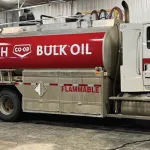
PAGC, MN-S call for changes with disaster assistance program; SPSA requests federal help
The Prince Albert Grand Council (PAGC) wants the Saskatchewan government to revise its Provincial Disaster Assistance Program (PDAP) to include trapline cabins.
Under the program, assistance is available to municipalities, homeowners, small businesses, farms and non-profit organizations for uninsurable losses. However, the PAGC said seasonal-use or secondary structures — including most trapline cabins — are ineligible, even if registered through the province’s Traditional Resource User (TRU) program.
Major fires have destroyed registered cabins used by First Nations such as Peter Ballantyne Cree Nation, Lac La Ronge Indian Band, and Montreal Lake Cree Nation.
“These aren’t cottages or vacation shacks. They’re homes, workplaces and lifelines,” said Grand Chief Brian Hardlotte in a media release issued earlier this week.


